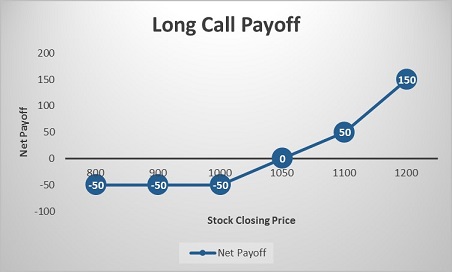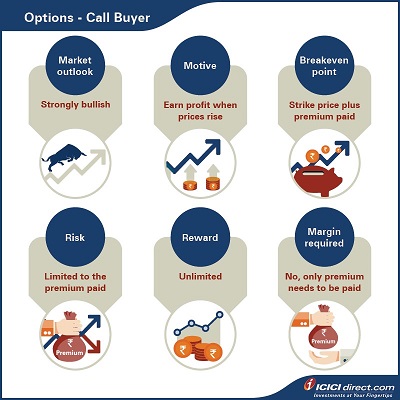Learning Modules Hide
Hide
- Chapter 1: Basics of Derivatives
- Chapter 2: Futures and Forwards: Know the basics – Part 1
- Chapter 3: Futures and Forwards: Know the basics – Part 2
- Chapter 4: A Complete Guide to Futures Trading
- Chapter 5: Futures Terminology
- Chapter 6 – Futures Trading – Part 1
- Chapter 7 – Futures Trading – Part 2
- Chapter 8: Understand Advanced Concepts in Futures
- Chapter 9: Participants in the Futures Market
- Chapter 1: Introduction to Derivatives
- Chapter 2: Introduction to Options
- Chapter 3: An Options Trading Course for Option Trading Terminology
- Chapter 4: All About Options Trading Call Buyer
- Chapter 5: All About Short Call in Options Trading
- Chapter 6: Learn Options Trading: Long Put (Put Buyer)
- Chapter 7: Learn Options Trading: Short Put (Put Seller)
- Chapter 8: Options Summary
- Chapter 9: Learn Advanced Concepts in Options Trading – Part 1
- Chapter 10: Learn Advanced Concepts in Options – Part 2
- Chapter 11: Learn Option Greeks – Part 1
- Chapter 12: Option Greeks – Part 2
- Chapter 13: Option Greeks – Part 3
- Chapter 1: Learn Types of Option Strategies
- Chapter 2: All About Bull Call Spread
- Chapter 3: All About Bull Put Spread
- Chapter 4: Covered Call
- Chapter 5: Bear Call Spread
- Chapter 6: Understand Bear Put Spread Option Strategy
- Chapter 7: Learn about Covered Put
- Chapter 8: Understand Long Call Butterfly in Detail
- Chapter 9: Understand Short Straddle Strategy in Detail
- Chapter 10: Understand Short Strangle Option Strategy in Detail
- Chapter 11: Understand Iron Condor Options Trading Strategy
- Chapter 12: A Comprehensive Guide to Long Straddle
- Chapter 13: Understand Long Strangle Option Strategy in Detail
- Chapter 14: Understand Short Call Butterfly Option Trading Strategy
- Chapter 15: Understanding Protective Put Strategy
- Chapter 16: Protective Call
- Chapter 17: Delta Hedging Strategy: A Complete Guide for Beginners
Chapter 4: All About Options Trading Call Buyer
Rajeev often gets confused. There is a section on a business television channel that promises Options strategies. However, he often feels more confused when he is unable to make sense of the advice give out by experts. He is contemplating signing up for a course to understand terms so that he can make sense of the expert advice and use it. Rajeev is not alone.
We know going long on an Option means to buy it while going short on it means to sell the Option. But going long on a Put Option and going long on a Call Option carry different connotations. Confused? Don’t worry, we’ll clear that up in this chapter.
Call and Put Options trade positions
As we know, there are two kinds of Options available in the derivatives market – Call Options and Put Options.
A Call Option is the right, not the obligation, to buy an underlying asset at an agreed price on a particular date.
A Put Option is the right, not the obligation, to sell an underlying asset at an agreed price on a particular date.
- Going long on Call Options makes you a buyer of that Option. It means that long Call Option gives you the right to buy an underlying asset but not an obligation. Going long or buying a Call Option means the buyer will have to pay an Option premium to the seller of the Option. The seller here is going short on the Call Option. The seller has to sell if the buyer exercises their right.
- Put Option gives the buyer of the Option the right to sell, not the obligation, the underlying asset. Here, the buyer is going long on the Put Option by paying an Option premium to the seller, i.e. the party going short on the Option.
|
Did you know? The Options premium changes with fluctuation in price. The profit and loss in the Option are equal to the difference between the premium paid and premium received. |
Now, let’s understand each of the Option positions in detail:
Long Call
A long Call position is useful when you are strongly bullish about the underlying stock or index. You expect a huge upside rally in the stock before the expiry of a contract.
Let’s understand this with an example.
Assume that you have purchased ABC Ltd.’s Rs. 1,000 Call Option at a premium of Rs. 50. It means that you have purchased the right to buy ABC at Rs. 1,000 on expiry and have paid Rs. 50 to the seller of the Option. In other words, you may buy ABC Ltd. at Rs. 1,000 on the expiry of the contract. You may prefer to buy if the market price is favorable to you i.e. if the price is more than Rs. 1000.
Let us look at three scenarios within this:
Scenario 1: ABC closes at Rs. 1,200 on expiry
In this case, exercising your Call Option will be profitable to you. You could purchase ABC at Rs. 1,000 per unit. Even after paying Rs. 50 as Option premium, you make a net profit of Rs. 150.
- Please note that Rs. 50, paid to the seller, is the upfront cost. Your breakeven point, in this case, would be Rs. 1,000 + Rs. 50 = Rs. 1,050.
Alternatively, we can also calculate the premium paid and premium received as follows:
Premium paid = Rs. 50
Premium received on expiry (equal to intrinsic value) = Max {0, (Spot price – Strike price)} = Max {0, (1200 – 1000)} = Max (0, 200) = Rs. 200
Net profit/loss = Premium received – Premium paid = 200 – 50 = Rs. 150
Scenario 2: ABC closes at Rs. 800 on expiry
In this case, it would make sense not to exercise your Call Option. You will lose the premium paid i.e. Rs. 50. However, the loss in the long Option position in this case is not more than the premium paid.
Alternatively, we can also calculate the premium paid and premium received.
Premium paid = Rs. 50
Premium received on expiry (equal to intrinsic value) = Max {0, (Spot price – Strike price)}
= Max {0, (800 – 1000)} = Max (0, – 200) = 0
Net profit/loss = Premium received – Premium paid = 0 – 50 = – Rs. 50 i.e. loss of Rs. 50.
Scenario 3: ABC closes at Rs. 1,050 on expiry
In this case, you may prefer to exercise your right and purchase ABC at Rs. 1,000. This will mean a profit of Rs. 50 but net profit would be Rs. 50 – Rs. 50 = 0, as you have paid Rs. 50 initially to purchase Options.
As we discussed in scenario 1, the breakeven point in this case is Rs. 1,050, so there won’t be any profit if ABC closes at Rs. 1,050.
Alternatively, we can also calculate the profit/loss by the difference in premium paid and premium received.
Premium paid = Rs. 50
Premium received on expiry (equal to intrinsic value) = Max {0, (Spot price – Strike price)} = Max {0, (1050 – 1000)} = Max (0, 50) = Rs. 50
Net profit/loss = Premium received – Premium paid = 50 – 50 = 0
The payoff in various scenarios is listed below:


A Call Option is the right, not the obligation, to buy an underlying asset at an agreed price on or before a particular date.
Summary

- A Put Option is the right, not the obligation, to sell an underlying asset at an agreed price on or before a particular date.
- Going long on Call Options gives the buyer the right to buy, not the obligation, the underlying asset. The seller here is going short on the Call Option.
- A long Call position is useful when you are strongly bullish about the underlying stock and index.

 Top Mutual Funds
Top Mutual Funds





COMMENT (0)